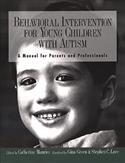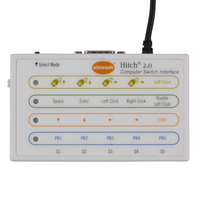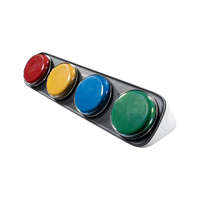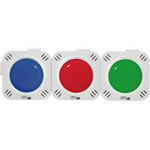BEHAVIORAL INTERVENTION CHILD/AUTISM
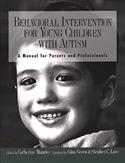
Description
A growing body of research shows that many young children with autism and pervasive developmental disorders can derive significant, lasting, and sometimes-dramatic benefits from early intervention based on the principles of Applied Behavior Analysis. This manual, inspired by that research, provides a wealth of practical information for parents, professionals, and others concerned with helping such children. Authors include parents whose children have been the beneficiaries of a science-based approach to autism treatment, as well as many noted researchers and experienced clinicians.
The manual gives the reader concrete information on how to evaluate treatment options and differentiate scientifically validated interventions from fads and “miracle cures”; assess children’s skills, needs, and progress objectively and systematically; teach children a wide variety of important skills, ranging from basics such as listening and looking, to complex language and social skills; and determine who is competent to deliver and supervise behavioral intervention.
Contents:
- Why This Manual?
- Evaluating Claims About Treatments for Autism
- Early Behavioral Intervention for Autism
- Are Other Treatments Effective?
- Selecting Teaching Programs
- Teaching New Skills to Young Children with Autism
- Behavioral Analysis and Assessment
- Identifying Qualified Professionals in Behavior Analysis
- Recruiting, Selecting, and Training Teaching Assistants
- The UCLA Young Autism Model of Service Delivery
- Community-Based Early Intervention
- Funding the Behavioral Program
- Incorporating Speech-Language Therapy
- Strategies for Promoting Language Acquisition
- What Parents Can Expect From Public School Programs
- Supported Inclusion
- Answers to Commonly Asked Questions
To see more of this product's contents:
©1996 • 400 pages • large-format softcover
BEHAVIORAL INTERVENTION CHILD/AUTISM

